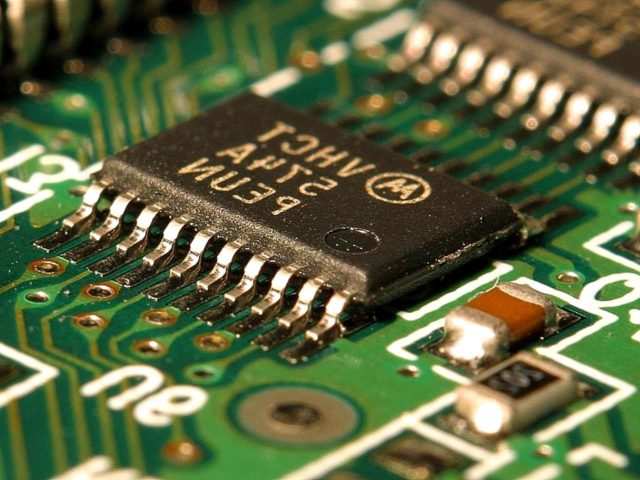There is no doubt that American electronics lie at the heart of Russian and Iranian weapons, including drones Russia has used to great effect in Ukraine.
Examination of downed and captured equipment shows that most of the critical electronics — various components, sensors, and even printed circuit boards — were acquired by networks operating in the U.S., Europe and Asia.
No country can field a military that depends on imported parts if there is a risk their supplies can be shut off. Ironically, the U.S. government is just slowly coming to a reckoning with military-related components imported from China. But Russia and Iran apparently believed there was little risk.
Why was the U.S. supplying its adversaries? Why was it so easy? Where was the opposition? The root of the problem is that export controls have been liberalized to help U.S. industry grow and open new markets, most critically in China.
The U.S. is supposed to control sensitive supplies and technology through a series of government mechanisms coordinated with our allies. During the Cold War, the U.S. had strict licensing regulations designed to keep the Soviet Union from acquiring technology that could be used in its military production.
Some of our allies had more lenient standards and battles between the stricter United States and the laxer European countries were legion. The U.S. won most of them, including halting the first Yamal Russia to Europe gas pipeline in the 1980s. China was not yet on the radar, so to speak.
But following the demise of the Soviet Union, and in the midst of a theoretical “peace dividend,” the U.S. export control system devolved, allowing sensitive national security technology to go to potential adversaries including Iran, China and a resurgent Russia.
U.S. government officials not only took essential goods off the control lists but encouraged American companies to transfer security-sensitive technology to China.
In light of the current revelations, the Biden administration has called for an “all hands” attempt to remedy the problem. But in this case, the “hands” are the hands that, one way or another were previously involved in the loosening of those controls.
The Departments of Commerce, State, Treasury and Defense, as well as the intelligence agencies (CIA, DIA, NSA, and others) were primarily responsible for the system that produced a wholesale loss of critical technology for decades.
It is hard to see how they will reverse years of reckless decision-making.
Goods that were once seen as sensitive were moved to the Commerce “no license needed” list of products, known in the jargon as EAR 99. Microprocessors, integrated circuits and GPS receivers were released, among many others. Once a product is qualified as EAR 99 it can be sent license-free, with no accountability, to anyone, anywhere.
In the few cases where items still require a license, the Commerce Department has approved exports even to suspicious end users. Even with a license, exporters were required to ensure that these items were not being deployed for military end use.
The presence of a large number of EAR 99-classified items in Russian military equipment suggests that they were procured under fake end-user certificates, or that they were diverted for military applications at a later point.
Sometimes they get caught. In June 2022, the U.S Treasury sanctioned three individuals and a Hong Kong company for allegedly operating as part of a covert procurement network linked to the Russian FSB. One of the sanctioned individuals was reportedly covertly sourcing electronics for the Russian defense industrial base from the US, Japan and Europe.
American defense companies are exploiting a massive export control loophole and selling even military products they can advertise as free of International Traffic in Arms Regulations (ITAR). ITAR is the list of munitions that cannot be freely exported, and it has been decimated by the liberal, leaky Commerce Department system.
Among the so-called ITAR-free systems freely available on the open market is defense-giant Raytheon’s GPS anti-jamming antennas.
And the list includes products made by many other U.S. and European defense companies. In simple terms this means vital military equipment can be bought by any unfriendly country that has cash.
Can the Biden administration, even this late in the game, fix the problem?
Maybe. But it would require a new export control mechanism run by experienced defense and counter-intelligence experts.
First would be a list of U.S. parts already on Iranian and Russian weapons and ban their export without a valid license and an approved end user. This will no doubt slow down some exports, but the tradeoff is that it will have a profound impact on Iran and Russia’s ability to continue to produce weapons.
Second is to put an end to ITAR-free systems that are principally military in character. The easy export of such items is harmful to U.S. security and the security of its allies and friends. NATO, especially, should be asked to play a strong role in demanding that its members stop unlicensed trade in dangerous military products.
Third is a complete re-think of the export control system. Its original premise was limited to maintaining the U.S. qualitative edge against our adversaries.
Over the years it failed in this mission and simply did not address the bigger question of what needs to be protected for American national security reasons.
And from whom.






